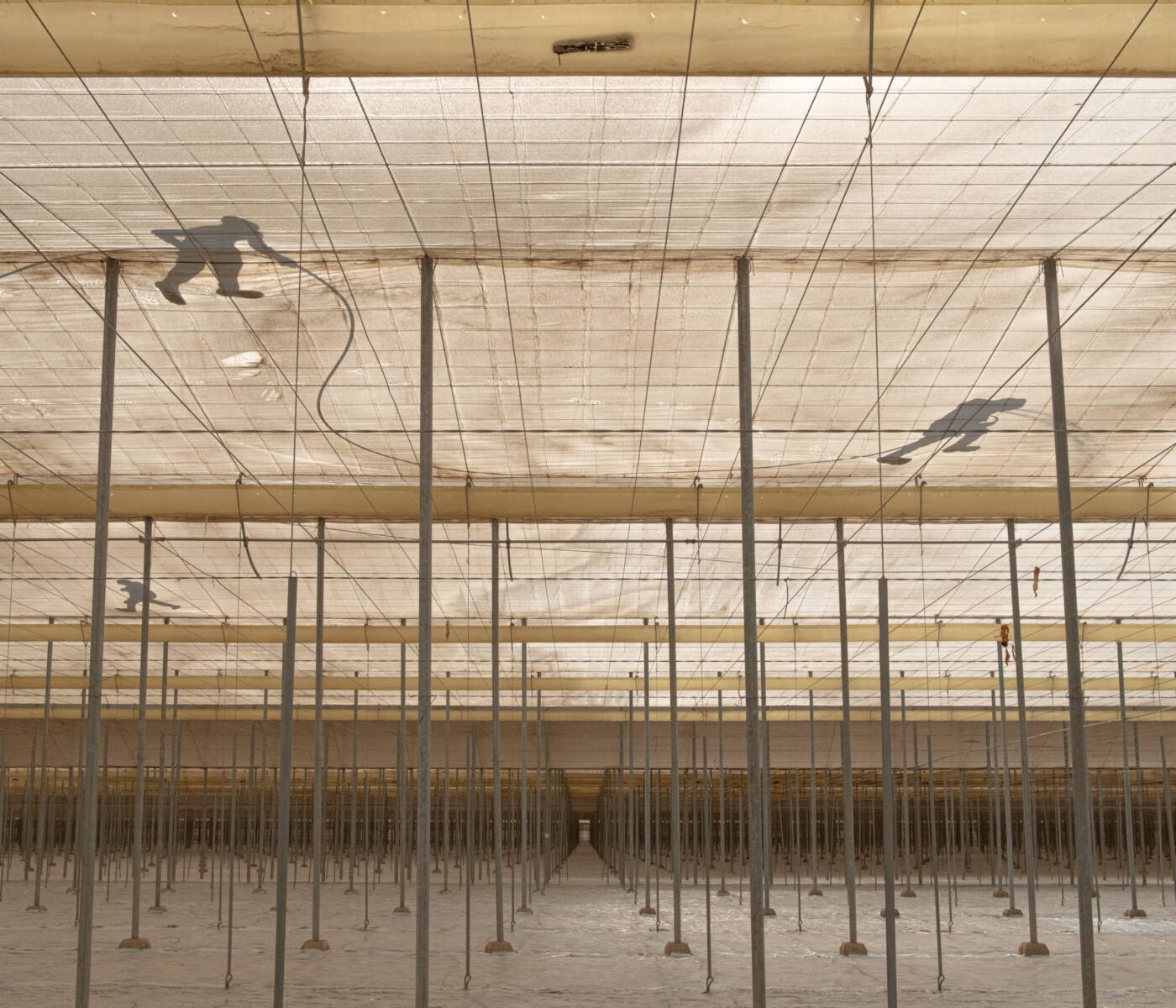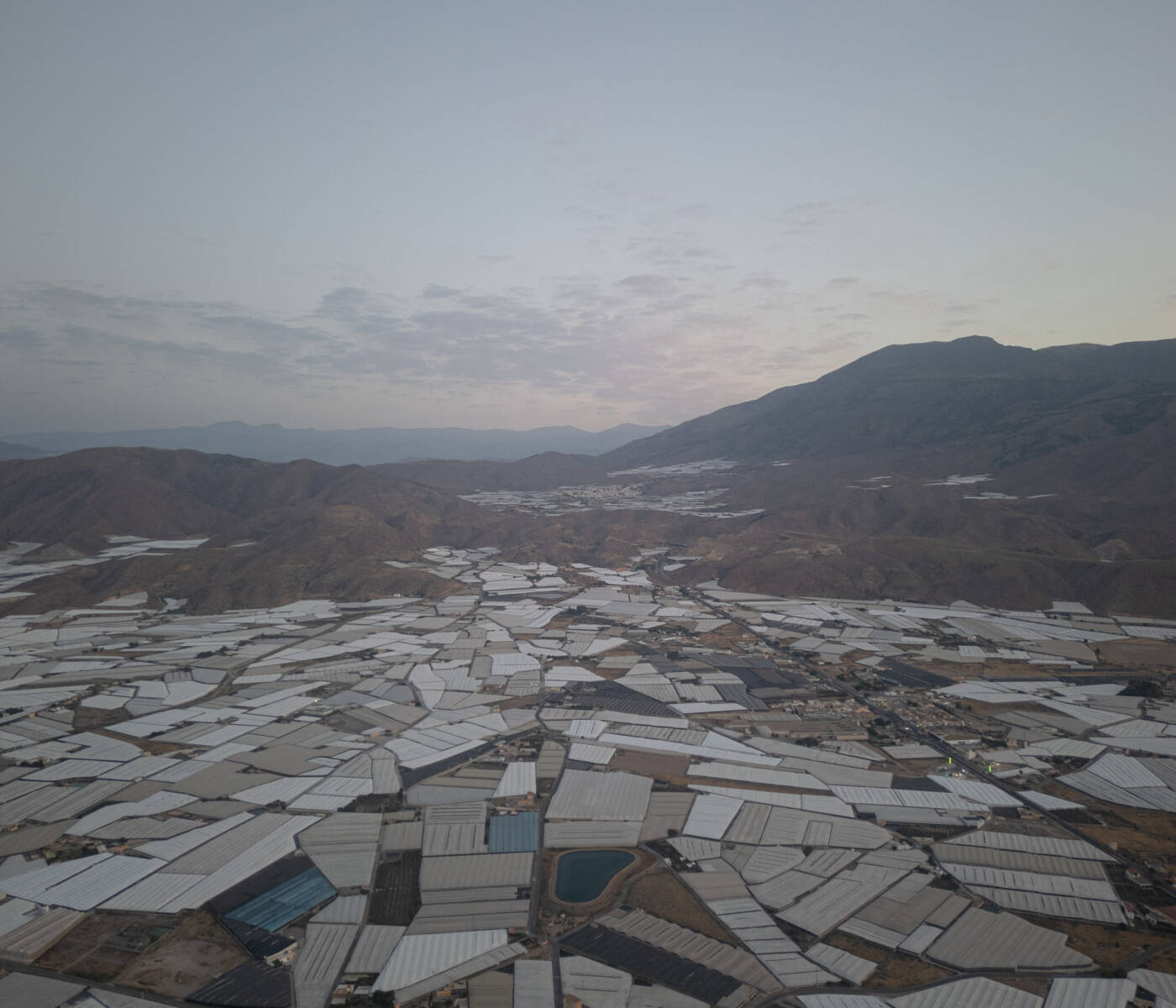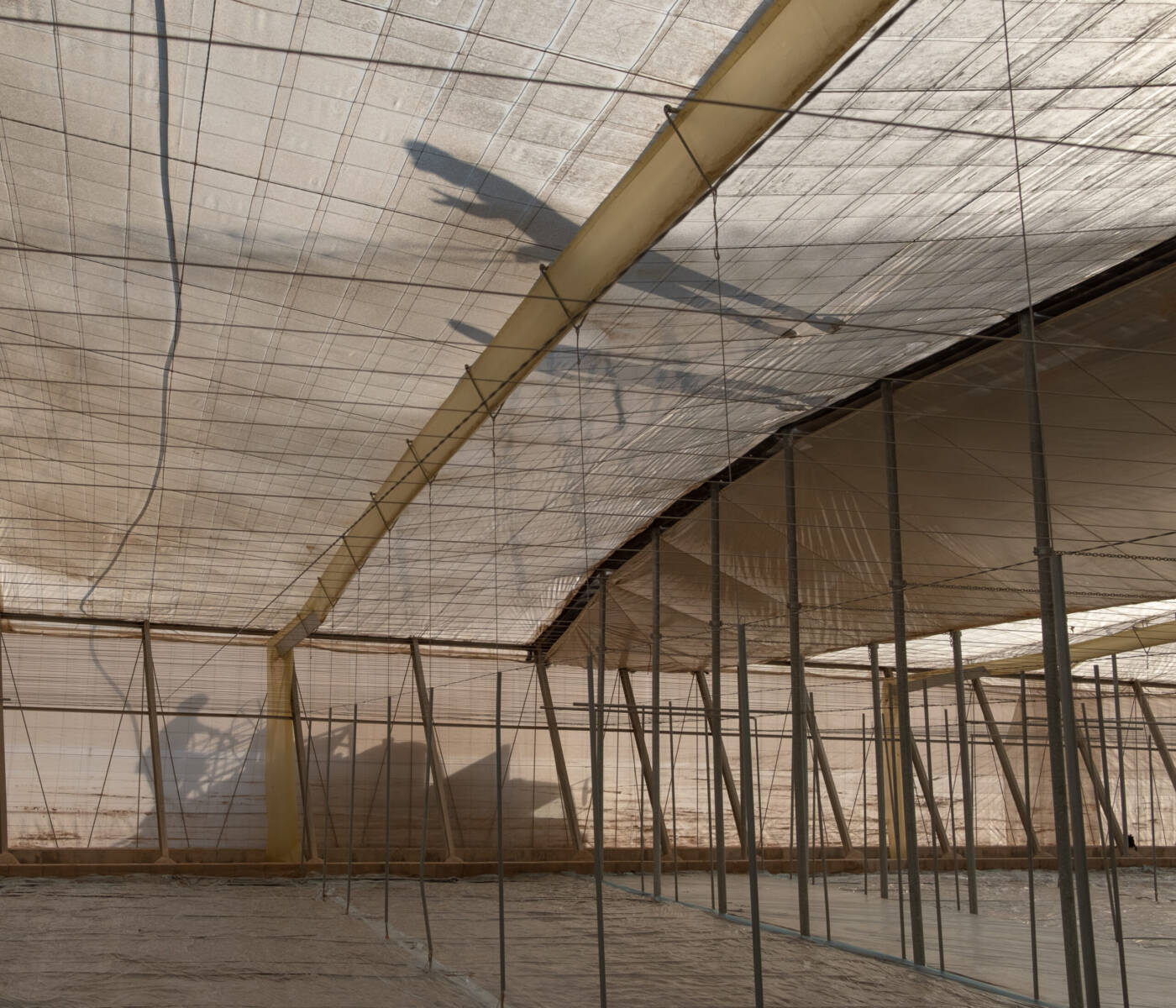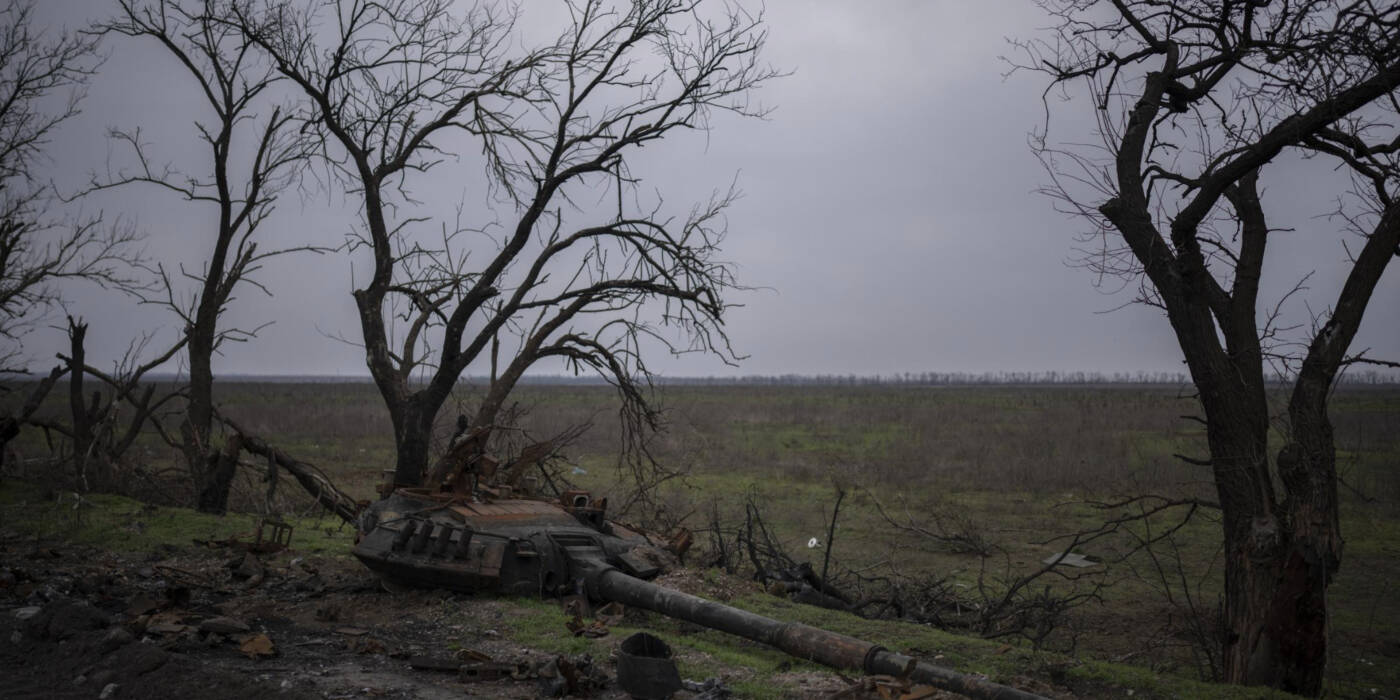Shadows on the Sea of Plastic
Almería’s “Sea of Plastic” expanse shows a unique scene as the sun goes out. Workers, balancing on the framework of greenhouses, cast their shadows upon the translucent ceilings. These silhouettes reflect against the blazing light and traverse the expanse with purposeful movements.
The process of whitewashing these greenhouses is crucial for regulating temperatures. It reflects solar radiation to protect crops from the intense heat. This annual ritual, typically performed in July, ensures the efficiency and productivity of the world’s largest greenhouse complex.
The solution is made out white-tinted based on plaster and similar materials. The correct shading balance is essential to maximize crop yield without hindering photosynthesis. Whitewashing greenhouses using solutions like lime or tinted compounds has been practiced in Almería for several decades. The practice has evolved over time, incorporating new technologies and materials to improve the efficiency and effectiveness of temperature control within the greenhouses. The use of tinted solutions, such as the blue-tinted variant, is a more recent innovation introduced to further optimize thermal regulation and resource conservation in the agricultural environment.
As climate change impacts weather patterns, such approaches will be vital in maintaining the resilience and productivity of the agricultural sector.





